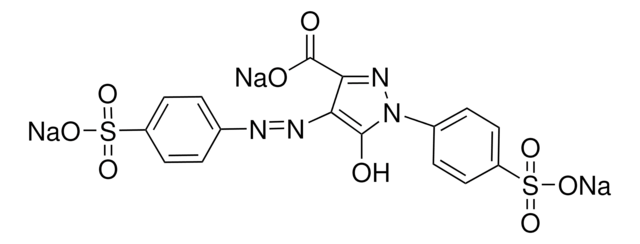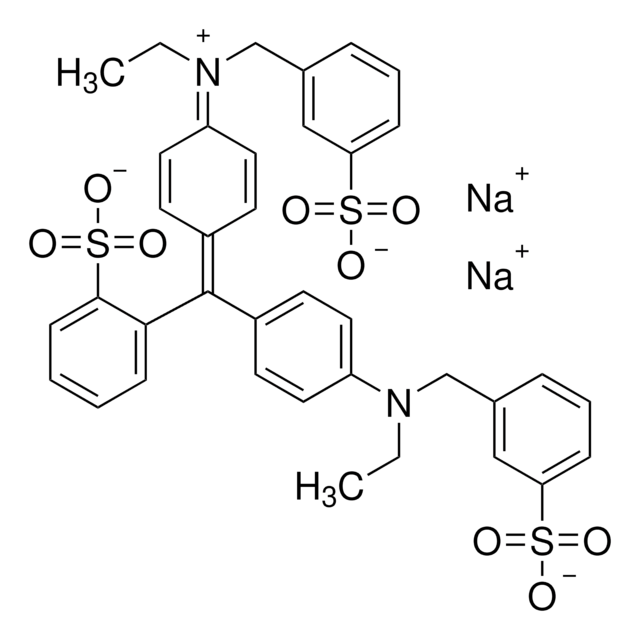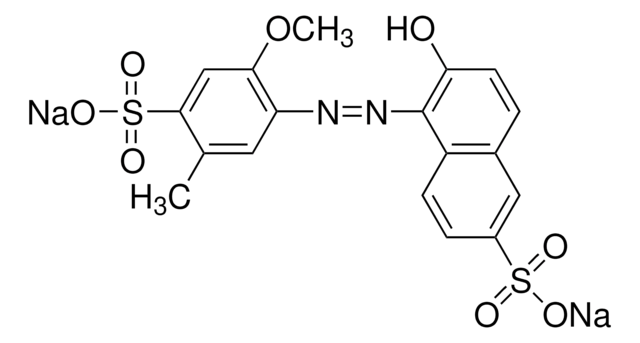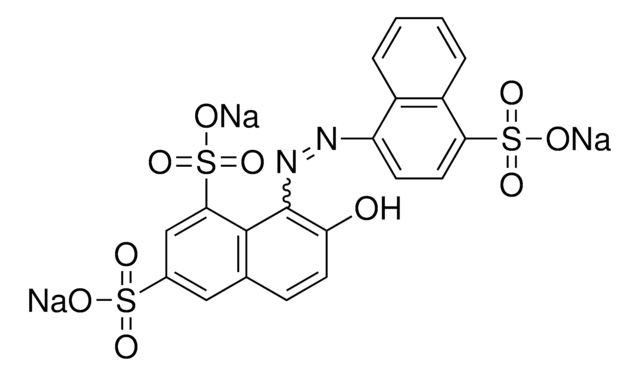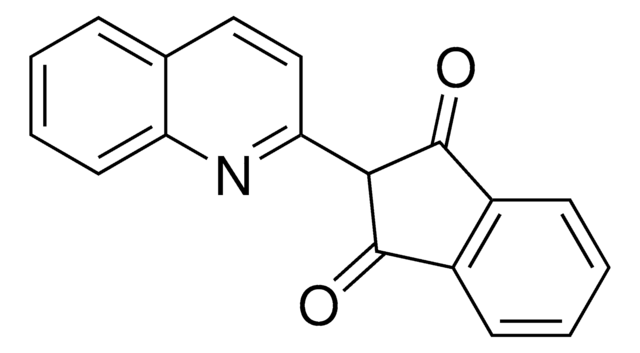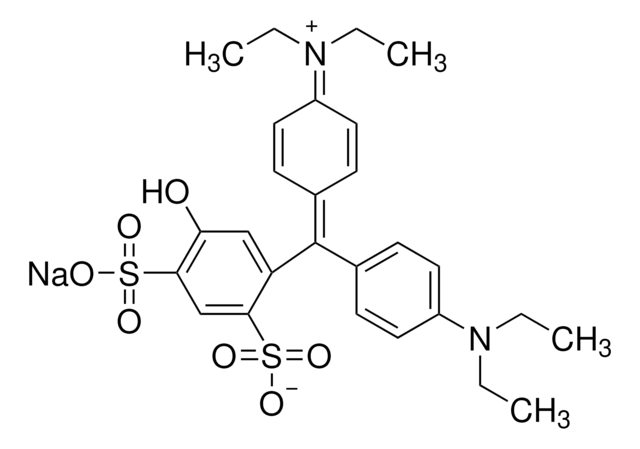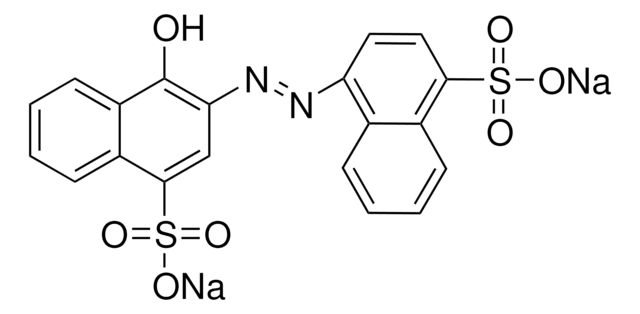T0388
Tartrazine
Dye content ≥85 %, Powder
Synonym(s):
Acid Yellow 23
About This Item
Recommended Products
Product Name
Tartrazine, Dye content ≥85 %
form
powder
composition
Dye content, ≥85%
technique(s)
titration: suitable
color
orange
solubility
H2O: 10 mg/mL, clear, yellow to orange
density
2.12 at 20 °C
εmax
435-500 at 425-429 nm in water
application(s)
diagnostic assay manufacturing
hematology
histology
storage temp.
room temp
SMILES string
[Na+].[Na+].[Na+].[O-]C(=O)C1=NN(c2ccc(cc2)S([O-])(=O)=O)C(=O)C1N=Nc3ccc(cc3)S([O-])(=O)=O
InChI
1S/C16H12N4O9S2.3Na/c21-15-13(18-17-9-1-5-11(6-2-9)30(24,25)26)14(16(22)23)19-20(15)10-3-7-12(8-4-10)31(27,28)29;;;/h1-8,13H,(H,22,23)(H,24,25,26)(H,27,28,29);;;/q;3*+1/p-3
InChI key
UJMBCXLDXJUMFB-UHFFFAOYSA-K
Looking for similar products? Visit Product Comparison Guide
General description
Application
The application of Tartrazine is seen in the phloxine-tartrazine procedure for cellular inclusions such as viral aggregates and eosinophil granules. It may be used as a substitute for orange G in a variant of Mallory′s trichrome, and in a methyl violet-tartrazine mixture to stain cryptosporidia in faecal smears and mucosal scrapings.
Storage Class Code
11 - Combustible Solids
WGK
WGK 1
Personal Protective Equipment
Choose from one of the most recent versions:
Already Own This Product?
Find documentation for the products that you have recently purchased in the Document Library.
Customers Also Viewed
Protocols
Separation of Tartrazine; Amaranth; Indigo carmine; New Coccine; Sunset Yellow FCF; Allura Red AC; Fast Green FCF; Erioglaucine disodium salt; Erythrosin B sodium salt; Phloxine B; Rose bengal
Our team of scientists has experience in all areas of research including Life Science, Material Science, Chemical Synthesis, Chromatography, Analytical and many others.
Contact Technical Service